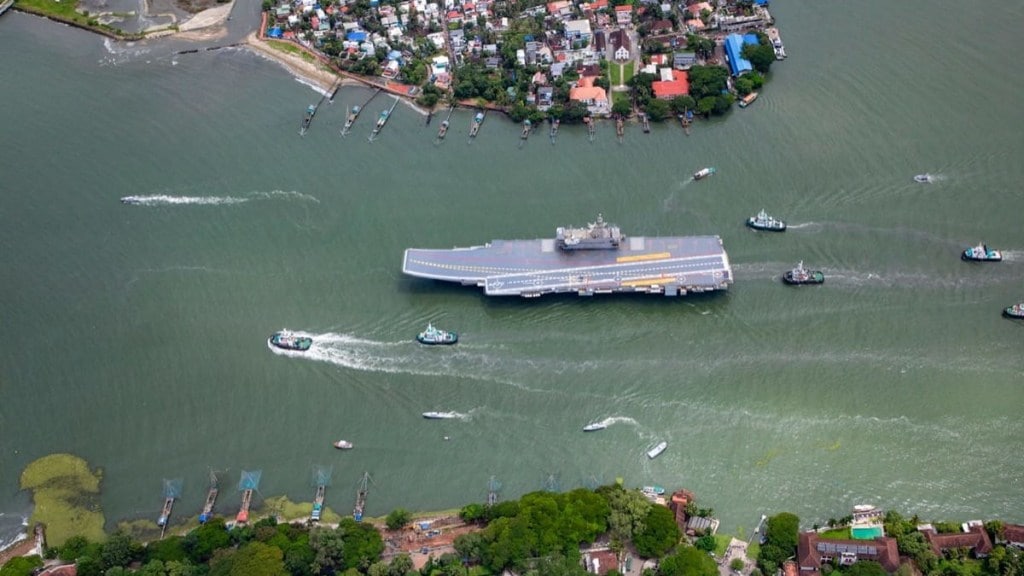On Friday, history was created when Prime Minister Narendra Modi commissioned India’s first Indigenous Aircraft Carrier Floating airfield `INS Vikrant’.
This new ship made in India at Cochin Shipyard Limited has the capability to travelling from India all the way to Brazil in one go.
The flying deck is around 12,500 sq m. Fun fact: According to the Indian Navy this means that the flight deck is roughly the size of 10 Olympic sized pools or two-and-a-half hockey fields.
The height of the new ship is 61.6 metres — keel to pole mast. This means it is as tall as 14 floors.
Cabling on board is all made in India, and is 2,600 km long. In his address at the commissioning ceremony, PM Modi said that the power which is generated by the ship can light up a small town.
With three automated galleys around 16,000 chappatis are churned out as well as on a average 6,000 idlis and 4,800 meals can be prepared on a daily basis.
Warship grade steel has been used to build the carrier which was developed by the Indian Navy, DRDO and SAIL.
The indigenous content is 76 percent and this according to the Indian Navy includes 150 km of pipes, and 2,000 valves, 2,500 km of electric cables, almost 23,000 tonnes of steel.
Also other parts on board including air-conditioning and refrigeration plants, and steering gear, rigid hull boats, and galley equipment.
More about the warship grade steel
Extra high tensile steel has been used in this project. DMR 249 A and DMR 249 B which were developed in India – this involved SAIL with the help of DMRL a lab under DRDO and with inputs from the Indian Navy were part of the process of developing these grade steel. These are equivalent to the high tensile plates which were originally planned to be sourced from Russia.
Employment
According to the Navy around 2000 direct employment opportunities were generated on board the aircraft carrier. And indirectly almost 40,000 were employed.
More than 50 Indian manufacturers were part of the IAC-Vikrant Project.
More details
Almost 80-85 percent of the project cost of around Rs 23,000 crore has been put back into the country’s economy.
Also Read: Historical Day! Indian Navy gets indigenous aircraft carrier, joins niche group of countries to build its own carrier
Weapons and equipment on board
It has the capacity to carry around 30 aircraft/helicopters on board, depending on the operations it will be deployed for.
Equipped with Short Take Off But Arrested Recovery (STOBAR) — a ski-jump for launching aircraft. And there is a set of three ‘arrester wires’. These are used for the recovery of the aircraft onboard.
The new ship will offer an “incomparable military instrument with its ability to project Air Power over long distances, including Airborne Anti-Submarine Warfare and Airborne Early Warning, Air Interdiction, Anti-Surface Warfare, offensive and defensive Counter-Air”.
Big industry houses part of the new aircraft carrier
100 MSMEs, Keltron, L&T, BEL, BHEL, GRSE, Kirloskar, Wartsila India, and many more have been involved in this project.
